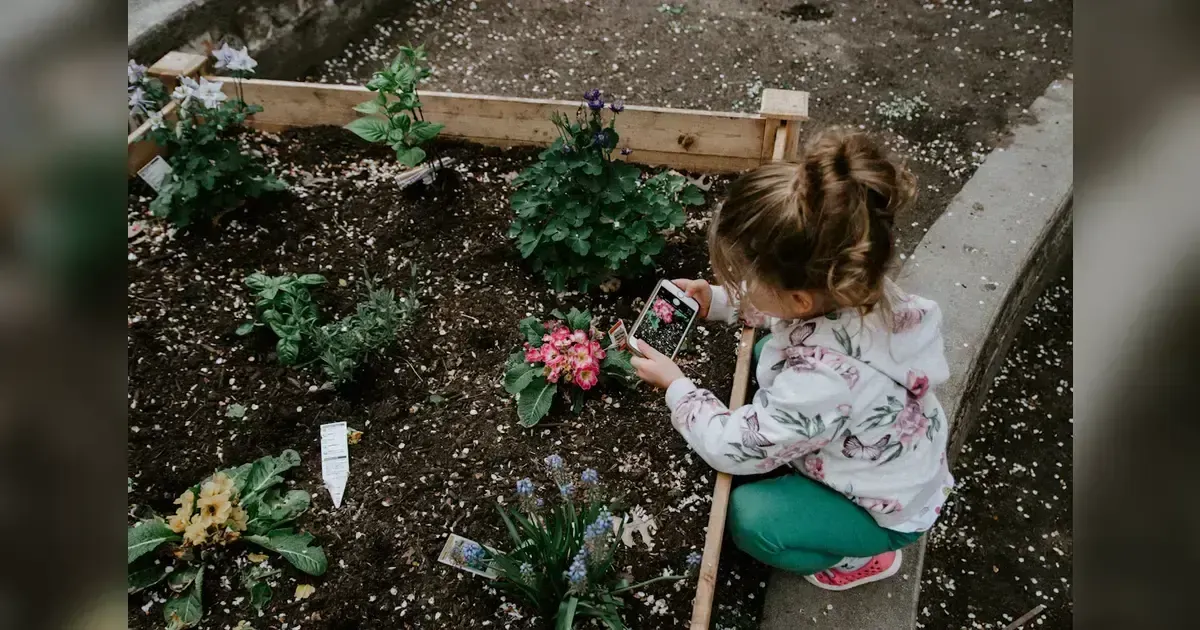Discover more about Why You Should Garden With Your Children.
Playing in a garden helps children explore lifecycles, wildlife, insects, the weather, and other natural wonders. There is a great deal of walking, bending, digging, and various other movements required. It's a fantastic method to instill good habits at a young age and promote physical activity, making it second nature.
What Ways Does Gardening Contribute To Your Child's Growth And Development?
Engaging in gardening with your children equips them with abilities to assist in their overall development. Gardening contributes to physical development as it involves physical exertion. Children are able to stay active without even knowing it. Children's mental growth benefits from fresh air, nutritious meals, and an extra boost of vitamin D.
Additionally, individuals also possess self-esteem, satisfaction in their accomplishments, and a feeling of value. Family bonding through social development is invaluable and mutually beneficial. Finding ways to remove children from screens and develop strong interpersonal skills and connections is crucial.
How Can You Educate Your Children On Cultivating Their Own Fruits And Vegetables?
Begin by using a small pot or elevated garden box to cultivate some salad greens, peas, or crisp radishes. As you become more confident, you can increase the number of plants, use an additional pot, or expand the area for growing vegetables.
Gradually, you will gather a valuable bank of knowledge and self-assurance that will serve as motivation for your children as well. You could also cultivate certain vegetables alongside your flower garden, such as rainbow chard, red kale, purple podded beans, or lettuce that are attractive enough to blend in with any flower garden.
Advice for Educating Your Children on Gardening
Begin in a modest manner. You can teach your child about gardening using a simple pot, no need for a large garden.
Select plants with fascinating qualities such as distinctive vegetables, strange colors, or uncommon shapes to engage children's interest.
Attempt to demonstrate to children the process of growing food from seed to plate and teach them how to appreciate and enjoy eating it as well. Avoid pushing, it's supposed to be enjoyable.
Explore a farm or farmers market together to discover different types of produce and decide on which new vegetables to taste.
A variety of vegetables can thrive in pots or a raised bed on the patio, and you can also cultivate kitchen scraps on the windowsill to produce a new harvest.
Here are a few methods to spark children's interest in gardening.
Allow them to join you in the garden, assisting with digging, watering, or planting next to you.
Construct a willow wigwam, bamboo teepee, or small tent for their recreational use.
Highlight the enjoyment of gardening and offer the chance for individuals to have fun and express their creativity independently.
Organize snail hunts, scavenger hunts, planting races, and weeding competitions to make the garden more enjoyable.
Get them to appreciate nature at a young age.
Many people claim that their children are too young to begin gardening, but this belief is incorrect.
Begin with a seed. Allowing children to cultivate plants from seeds aids in their learning and fosters a bond with the plants.
Sunflowers: Your children will be amazed at how fast they grow tall like the sunflowers.
Allow them some room. Providing children with their own plots or designated areas for gardening offers countless chances for fun and education. They have the ability to create mud pies, excavate holes, cultivate flowers, and grow food based on their preferences. Children must feel like they own a space in order to fully engage with it. Allow them to make errors and create chaos as it is enjoyable and provides ample opportunities for learning.
Preserve seed. Educate kids on the entire life cycle from seed to plate, and keep seeds for next year's planting.
Provide nourishment for the birds that are in need of sustenance. Kids enjoy animals and watching their backyard birds eat the food they provide.
Expand your horizons beyond your yard. Why don't you attempt to create seed bombs with your children? Take a look at this post for guidance.
Create a children's play area with small tools, chairs, a mud kitchen, and toys, as well as a space for gardening and playing with pets.
Outdoor mud kitchen for children to play with - these have recently become very popular, essentially being an outdoor kitchen for the garden. You can use yours for mud, water, seed planting, and kitchen activities, so it has proven to be a good investment.
Create a garden with a specific theme. Alice in Wonderland, dino land, or enchanted glade. Enjoy playing with plants and incorporate little toys for added intricacies.
Establish a habitat for wildlife or a space for leisure activities such as picnicking.
Tips For Creating A More Child-Friendly Garden
Incorporate child-friendly elements to create a garden that appeals to children.
Place vibrant fruit shoot bottles on the tips of bamboo canes to prevent children from poking their eyes.
Use vibrant colors to paint rocks and use them to create pathways.
Decorate fences with bunting.
A wind sock or windmill brings a playful touch with its movement.
The presence of wind chimes will contribute auditory elements to the surroundings.
Try offering them their own patch or pot exclusively for their use and enjoyment. Allow them to select seeds if they wish to cultivate their own garden.
Experiment with simple garden crafts to create a more child-friendly garden.
What Can I Grow With Children In Their Vegetable Patch?
Freshly shelled peas.
Lettuce and leafy greens.
Sunflowers
Strawberries are extremely low-maintenance and thrive in sunny locations.
Radishes can be an uncommon taste for kids due to their peppery flavor, but they are also very fast-growing.
Growing cherry tomatoes on tall stems is possible, but it is simpler if you opt for a bush variety like tumbling tom.
Having nasturtiums in your garden is wonderful because they spread across the earth, draw in many pollinators, and are also edible!
Conclusion
There are numerous reasons why it is important for all of us to have our children spend time outdoors and participate in gardening. We are aware that time is limited each day, however, even setting aside 5 minutes daily can ignite a passion for nature and inspire a desire to cultivate healthy organic food for your loved ones.


























